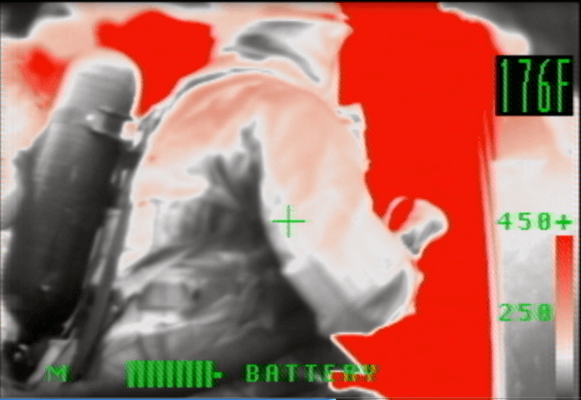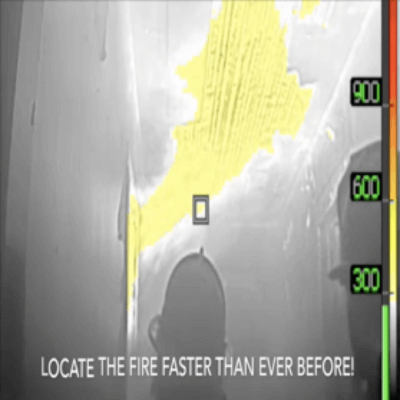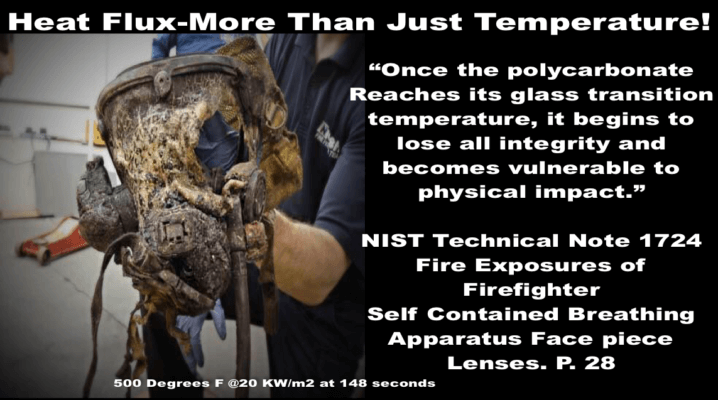Ever read the instructions on your turnout gear?
The following quotes come directly from Fire & Emergency Manufacturers and Services Association (FEMSA) User Information Guide which comes with every brand-new set of Firefighter Protective Garments. The following information should be read and understood by all firefighters.

“If your protective ensemble is exposed to radiant, convective, or conductive heat, you may be burned underneath with no warning and no sign of damage to the protective ensemble. Be constantly alert to the possibility of exposure to radiant, convective, or conductive heat and other hazards” (FEMSA User Guide p. 2-4).
“Burns are a function of time and amount of heat transferred to the body. You can be burned in relatively low temperature environments. If your protective ensemble is exposed to heat or flames long enough. Similarly, you can be burned over a very short period of time if your protective ensemble is exposed to relatively high temperatures” (FEMSA User Guide p. 2-4). Such as a Thermal Class II Environment of 320 degrees Fahrenheit for 15 minutes.
“Heat can build up and be stored in your protective ensemble element to the point that where your skin burns. Your skin burns at temperatures far below the burning point of your protective ensemble. Do not be misled by absence of thermal damage to your protective ensemble. Even without such damage, you may still be burned suddenly and without warning” (FEMSA User Guide p. 2-4).

“Convective Heat Burns: Convective heat is transferred by hot gases. You do not have to come into contact with flames in order to be burned. If your protective ensemble is exposed to heated air or gases at a fire scene you can be burned” (FEMSA User Guide p. 2-5).

Notice in the photo, the thermal convective heat currents coming out of the room on the firefighter’s left. This can be compared to cooking in a convection oven. A convection oven cooks food in ½ the time due to moving heated air. If firefighters fail to control the flow-path, fail to cool the superheated areas where they are going, then they are in effect crawling in a convection oven. There are numerous LODD reports where firefighters have died in uni-directional flow paths which are exhausts. These superheated gases overwhelm the firefighter’s PPE and in many LODD cases, firefighters did not have enough time to transmit a May-Day (see the San Francisco LODD report in the resource section). It is critical that firefighters understand and stop the transfer of heat, stop fire growth, and control the air to the fire.

The photo above shows the weakest link in a firefighters PPE (the face-piece lens). This material is made of polycarbonate, is 2-3 mm thick and begins to soften at 300 and failed completely at 500 degrees after 148 seconds in 15 kW/m2 heat fluxes (moving convective heat currents). This information comes from the NIST Technical Note 1785 Thermal Performance of Self- Contained Breathing Apparatus Face piece Lenses Exposed to Radiant Heat Flux (p. 10). Firefighters need to understand the importance in controlling temperature, mitigating/controlling flow path, and staying ever alert to changing conditions.
This short article lists but a few critical reasons why firefighters need to understand thermal severity in regards to fire behavior and how it affects our PPE.
Stay Intelligently Aggressive,
Instructor Andy Starnes

